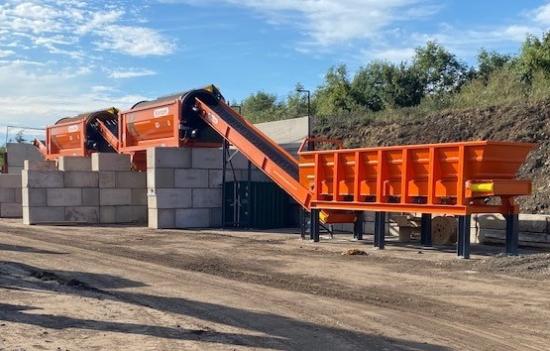Since October 2021 all of the recycling collected in your orange lidded bins has been sent to a recycling facility near Grantham in Lincolnshire to be sorted. A variety of magnets, currents, size-sorting equipment and conveyor belts separate the different materials into single streams. They are then baled and sold to reprocessors who melt, pulp or crush them to make new products.
<
In 2023 all the recyclables collected by the Council were sorted in the UK. These materials were then sold on to re-processors and manufacturers to become new materials and products.
Where material has been exported, the locations it was sent to are all fully licensed and operate to environmental standards.
The exported materials had already been sorted and were high-quality materials ready to be made into new products.
- Paper and cardboard are sorted into different grades and sent to mills to be pulped and made into new paper and card products.
- Cans are separated into aluminium and steel. Then they are melted by processors to form ingots, which are sold to manufacturers who can make anything from new drinks cans to aeroplanes.
- Plastic bottles, pots, tubs and trays are sorted to separate the different polymer types. They are shredded and cleaned, then melted into pellets. These are sold to manufacturers to make new plastic packaging, garden furniture and even fleece jackets.
- Textiles from local recycling sites are sorted and reused, in some cases raising money for the charities that sponsor the bins. Many items are reused in the UK, but most are sent to Africa or Eastern Europe.
- Glass from local recycling sites is melted and used to make new bottles. Metal bottle tops and lids are also separated and recycled as part of this process.
Between 18% and 20% of the materials put in the orange lidded bin by residents are unfortunately not recyclable for example food, textiles, sanitary/nappy waste, wet paper and wood. This non-recyclable material is separated, processed into SRF (Solid Recovered Fuel) and burnt in cement kilns as an alternative to coal.

